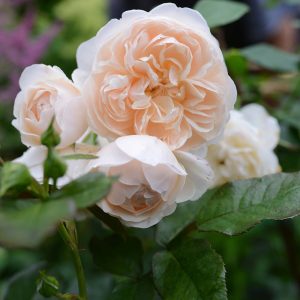Description
Iberis are so called due to its prevelance on the Iberian peninsular. Iberis sempervirens, commonly known as candytuft, is a small but showy evergreen shrub with dense clusters of fragrant, white flowers that bloom in the spring. The plant is native to southern Europe and western Asia, but has been widely cultivated in gardens throughout the world for its attractive flowers and foliage. Candytuft is a popular choice for rock gardens, borders, and as a groundcover. It prefers well-drained soil and full sun, but can also tolerate some shade. The plant is generally easy to grow and maintain, and is known for its ability to attract pollinators such as bees and butterflies. Some popular companion plants for candytuft include other spring-blooming perennials such as primroses, forget-me-nots, and tulips. These plants are often used together in gardens to create beautiful displays of colour and texture.
Key Facts
- Common Name(s):Candytuft ‘Fischbeck’
- Hardiness:Fully hardy
- How big will I get? Iberis sempervirens ‘Fischbeck’ can grow to a height of 0.3m and a spread of 0.3m.
- Did You Know That:The name “candytuft” is believed to come from the plant’s sweet scent and its use as an ornamental plant in candy shops during the Victorian era?
Plant Calendar
A rough guide to how this plant will change through the year.
| Jan | Feb | Mar | Apr | May | June | July | Aug | Sept | Oct | Nov | Dec | |
| Flowering Time | 
| 
| 
| |||||||||
| Foliage Colour |  |
 |
 |
 |
 |
 |
 |
 |
 |
 |
 |
 |
| J | F | M | A | M | J | J | A | S | O | N | D |

| 
| 
| |||||||||
 |
 |
 |
 |
 |
 |
 |
 |
 |
 |
 |
 |
Care Guide

Soil Requirements
Iberis sempervirens ‘Fischbeck’ prefers moist but well-draining soil. This plant can grow in soil with a wide range of pH levels, it is not picky about the pH level of the soil.

Best Position
Iberis sempervirens ‘Fischbeck’ can handle either an exposed or a sheltered position and requires full sun to thrive, this consists of more than six hours of direct sunshine per day.

Maintenance
Iberis sempervirens ‘Fischbeck’ should be trimmed lightly after it has finished flowering, as well as removing any spent flowers. This will help prevent the plant building a woody base with no foliage or flower coverage by keeping it nice and compact.

Pest, Diseases and Wildlife
Iberis sempervirens ‘Fischbeck’ can have problems with slugs, snails and caterpillars, and it tends not to have problems with diseases. It is also known to attract bees and butterflies.





